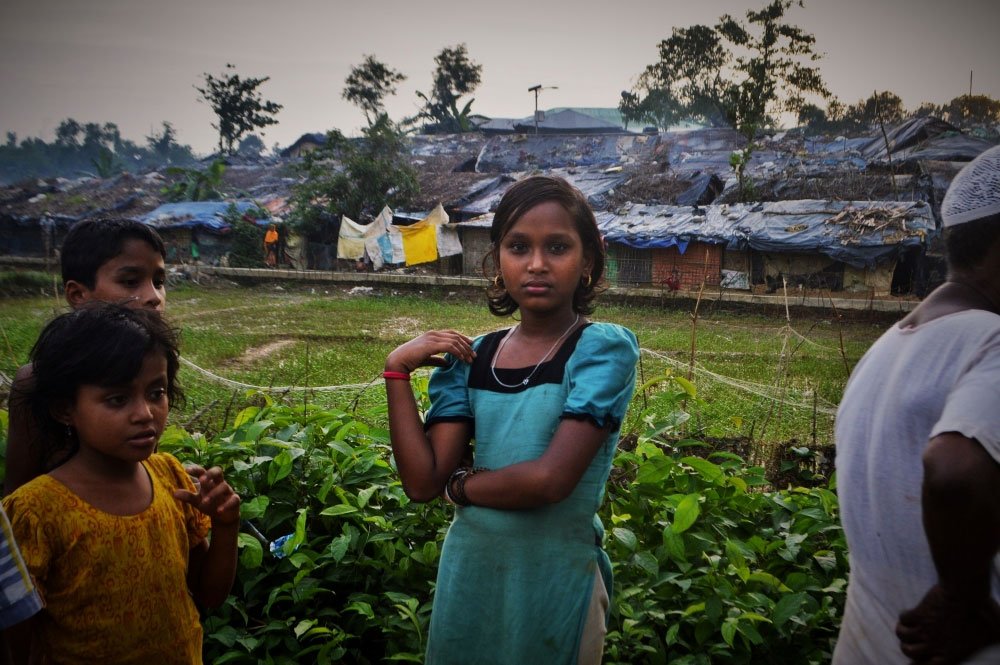Bangladesh is forging ahead with a controversial plan to settle hundreds of thousands of Rohingya Muslim refugees from Myanmar on an isolated, undeveloped, flood-prone island in the Bay of Bengal.
According to the latest estimates from U.N. officials, 313,000 Rohingya have poured across the border from the neighboring Myanmar state of Rakhine in the last two weeks. They are fleeing yet another brutal and sweeping “clearance operation” by government security forces after an emerging Rohingya insurgency group attacked police outposts on August 25.
The U.N. High Commissioner for Human Rights, Zeid Ra’ad Al Hussein, yesterday called on the government to end the “cruel military operation.”
“Because Myanmar has refused access to human rights investigators the current situation cannot yet be fully assessed, but the situation seems a textbook example of ethnic cleansing,” Zeid told the Human Rights Council.
A Bad Plan, Revisited
After 87,000 arrived following a similar spate of violence in October 2016, joining another 400,000 already in makeshift camps, Bangladesh is desperate to relieve the strain on its already tight land and resources.
“We have requested international agencies for help for shifting the Rohingya temporarily into a place where they can live – an island called Thengar Char,” H.T. Imam, a political adviser to Bangladesh’s prime minister, told Reuters last week. The plan is to house the Rohingya refugees on Thengar Char until Myanmar takes them back.
Thengar Char is a currently uninhabited island that emerged from the Bay of Bengal just 11 years ago. Composed of silt runoff from the Himalayas, it is flat, featureless and ever-shifting. Two hours by boat from the nearest settlement, the island is currently completely undeveloped.
Map of Thengar Char by the Noakhali district administration
Thengar Char does not even appear on Google Maps
When Thengar Char first appeared, Bangladesh thought that perhaps the island was its long-awaited solution to overcrowding. But then it became apparent that the area is highly susceptible to cyclones that could submerge the entire island. Even without cyclones, Thengar Char is prone to flooding every year from June to October. When the waters are calm, pirates lurk nearby in search of fishermen to kidnap for ransom.
“It’s a terrible idea to send someone to live there,” an official told Agence-Presse France earlier this year on condition of anonymity.”[It is] only accessible during winter and is a haven for pirates. …It completely inundates during the monsoon.”
Although officials abandoned the idea of settling their own citizens on the island, they once again proposed developing the island for refugee settlement in 2015 and again last year. Both times, the plan was met with criticism from humanitarian workers and human rights advocates.
“What Bangladesh is really proposing is to put the Rohingya out of sight and out of mind on an island, and hope they are forgotten by [the] international community,” Human Rights Watch’s Phil Robertson said in February, according to Foreign Affairs.
Often described as the world’s most unwanted people, the Rohingya are unlikely to be taken back by Myanmar, as Bangladesh hopes.
Myanmar has denied the 1.1 million Rohingya Muslim population citizenship and basic rights, because the government and Buddhist ethnic majority consider them illegal Bengali migrants, not an ethnic minority. For generations, they have been confined to heavily guarded villages and internally displaced persons (IDP) camps that have been likened to concentration camps. According to a U.N. report earlier this year, they have also been the subject of the “likely commission of crimes against humanity.”
Alhough Bangladesh’s Prime Minister Sheikh Hasina has said the country will continue to accept Rohingya refugees on “humanitarian grounds,” it is clear from officials and locals that they are not fully welcome in Bangladesh either. Many locals, who resent the Rohingya for draining their resources and blame them for an increase in crime, are eager to relocate them to Thengar Char.
Of course, the Rohingya, who have heard about the cyclones and earthquakes, do not want to be settled on the island if they have a choice. But officials who support the plan say that conditions on the island are no different from many parts of the country – and, therefore, are liveable. However, others have expressed fear that settling the Rohingya on Thengar Char would make it harder to send them back to Myanmar.
In this most recent outbreak of violence – the deadliest in decades – security forces have killed nearly 400 people as “insurgents.” Reports and satellite images also show at least 10 villages burned to the ground. This weekend, reports emerged that Myanmar may be planting landmines along the route that Rohingya refugees are using to flee.
The government, however, blamed insurgents for the fires as well as for the “huge iceberg of misinformation” about the violence, according to a recent Facebook post by Myanmar’s de facto leader, Nobel Peace Prize winner, Aun San Suu Kyi.
Myanmar has also blocked all U.N. agencies from delivering humanitarian aid, contributing to the alarm that this is now the fastest growing global humanitarian crisis. And with Bangladesh, their country of refuge, planning to send them into an uninhabitable situation, it seems the Rohingya have just fled from one deadly crisis into another.
